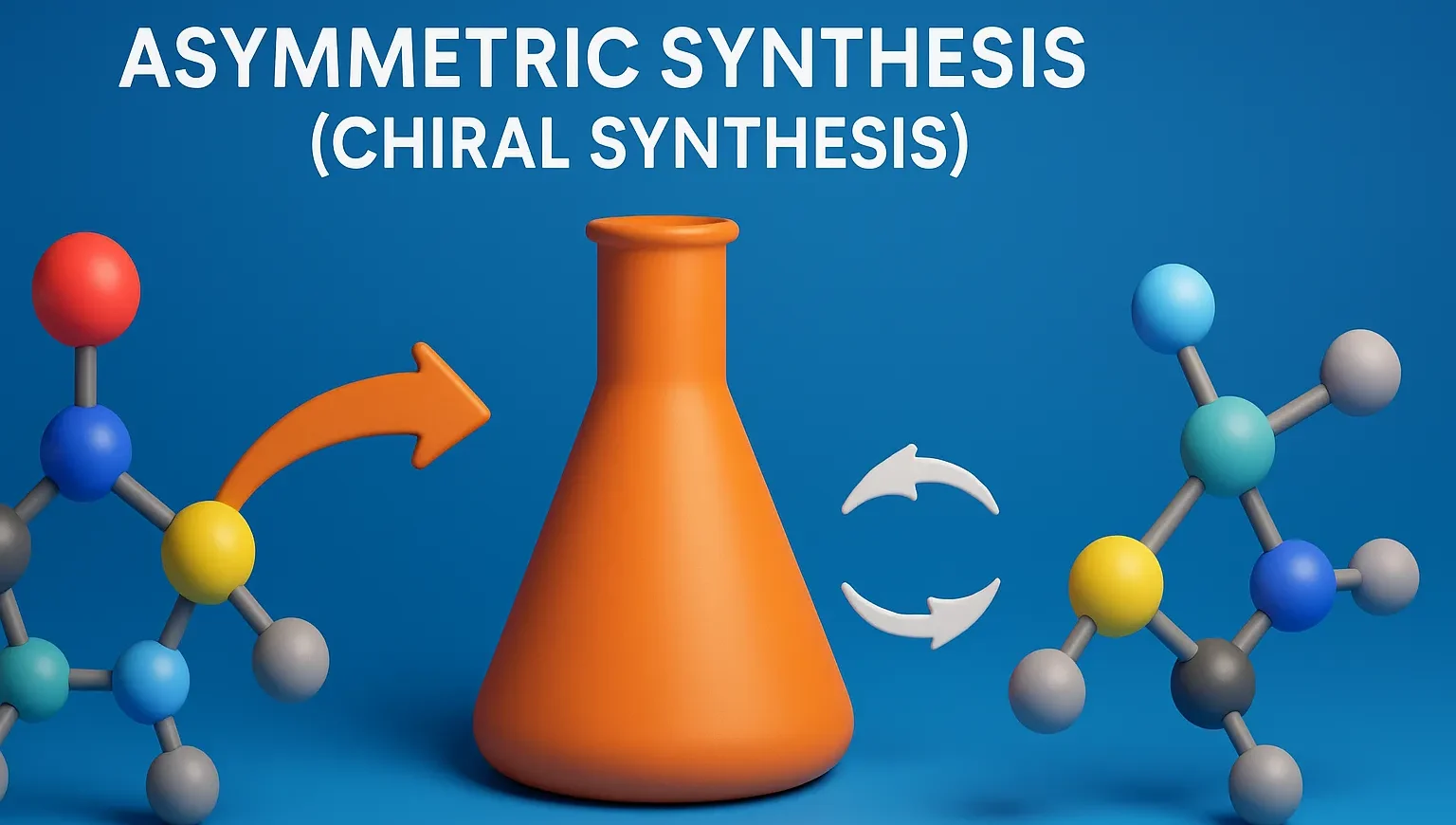Asymmetric Synthesis (Chiral Synthesis) is a method of creating compounds with a preferred chirality to produce optically active molecules.
Definition:
- Asymmetric synthesis is a chemical reaction that forms chiral products in a way that favors one stereoisomer (enantiomer or diastereomer) over the other.
- Essential in drug synthesis, since enantiomers can have different biological effects.
Types of Asymmetric Synthesis
-
Partial Asymmetric Synthesis (Enantioselective/Diastereoselective)
- Produces both enantiomers, but one in greater amount.
- Measured by enantiomeric excess (ee):
$ee = \left| \frac{R – S}{R + S} \right| \times 100$
-
- Achieved by using chiral catalysts, auxiliaries, or reagents.
- Example:
- Hydrogenation of prochiral alkenes using chiral Rh-catalyst gives more of one enantiomer.
-
Absolute Asymmetric Synthesis
Click Here to Watch the Best Pharma Videos

